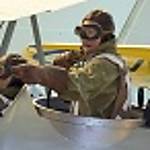I just wrote this for the Sikorsky Archives.
“SIKORSKY’S FIRST SUCCESS: The Russky Vityaz (Russian Knight) was the world’s first four-engine aircraft. It was designed and built by Igor Sikorsky, then working in the Russian Empire. It is hard to imagine this airplane, which looks like a flying ticket-booth, gliding through the air, but the airplane only flew at 56 miles per hour. Scientific American, October 11, 1913”
May 10, 2013, Is the Hundredth Anniversary of I.I. Sikorsky’s flight of the first four engine airplane. As quoted above the world took little notice, the date on the picture caption shows the slowness of news at the time. In fact there were a few “experts” in France (then the center of aviation) who thought it was a hoax, because no one could build an aircraft that large, let alone fly it.
As it was Innovation was Sikorsky’s middle name (It was actually Ivanovich) he had been building toward this moment since 1910 and his first airplane the S-1, (he had a personal hand in S-1 through S-60, we are now at S-97). S-1, could hop but not fly, he and his friends built it S-5, was his first successful flyer which means paraphrasing him; it was the first aircraft he built where all the controls work correctly and he felt it would not kill him. In it he became Russian Pilot number 67.
Now the story begins, In October 19, 1911, while taking off in the S-5, the engine stopped suddenly the resulting crash destroyed the plane, bruised the pilot, and created an idea. Sikorsky investigated the crash and discovered a mosquito had clogged the fuel jet inside the carburetor, stopping the fuel. He thought, if I had another engine I could have maintained control and not crashed. He began to make sketches.
Now though Sikorsky came from an upper middle class family this flying was a hobby more than a vocation, he was 22, and living at home. Airplanes were expensive toys, from the wreckage of S-5 he built the S-6, he scraped together money to buy a 100 horsepower Argus from Germany, one of the best aero engines of the day, and the S-6 turned out to be one of the best airplanes of its day. Sikorsky entered and won a Military Airplane Contest with the S-6, in February 1912, as a result he was hired as the chief engineer of the new aviation branch of the Russian-Baltic Railcar Factory (RBVZ); with the job he had money to modify the S-6 to the S-6B, which in September of 1912, Sikorsky and RBVZ, won a contract with the Russian military beating out several major French and German Aircraft companies. (the S-6B being the only aircraft capable of taking off from a plowed field; a major requirement). During the contest the chairman of RBVZ took Sikorsky out to dinner and during the meal asked him what he would like to do for his next project. Sikorsky said he would like to design a large comfortable passenger aircraft with several engines. He ended the description by offering his share of the prize 9Should he Win) to finance the project. The chairman replied “No… Start immediately.”
Sikorsky gave his share of the prize money to his family to repay the years they supported his dream of flight.
The craft he designed he called, the Grand, flew first on May 10th 1913 with two engines to test stability, then he added two more engines behind the others in a push-pull arrangement flying the world’s first four engined airplane but the front engines interfered with the rear set so Sikorsky reset the engines four abreast on the leading edge of the wing two and each side of the fuselage. The performance improved and in July he set the first record by flying 1 hour and 50 minutes. The Czar of Russia Nicholas II, became interested in Sikorsky’s machine and asked for a demonstration, Sikorsky flew to a military field near the palace and after the demonstration had a rare one on one meeting with the Czar aboard the Grand.
A few days later he received as a gift a gold watch from the Czar as a thank you gift.
The Grand now also known as the Big Baltic, and the Russian Knight, was flown until September 1913, when a freak accident ended its career; another airplane flying over the flying field lost its engine, which fell through the wing of the Grand. Sikorsky was already designing a bigger follow-on four engine aircraft, the Ilya Morometz and though he could have repaired the Grand it was disassembled and the parts were used to build his next.
Length: 65 ft, 7 in
Span: 88 ft, 7 in, upper wing
65 ft, 7 in, lower wing
Power: 4 Argus 100 hp engines
Speed: 56 mph
Crew: 3
Passengers: 7
The Grand was also one of the first aircraft to have a completely enclosed cockpit and passenger compartment.
References:
The Sikorsky Legacy, by Sergei Sikorsky; Arcadia Publishing, 2007
Igor I. Sikorsky Historical Archives, Stratford, CT
Igor Sikorsky: the Russian Years, by K.N. Finne
There are many photos for the plane on the Web.
Early Aviation
Discuss World War I and the early years of aviation thru 1934.
Discuss World War I and the early years of aviation thru 1934.
Hosted by Jim Starkweather
Sikorsky Le Grand -100years

CaptnTommy

Joined: October 26, 2009
KitMaker: 424 posts
AeroScale: 389 posts

Posted: Monday, May 06, 2013 - 04:38 AM UTC
 |






